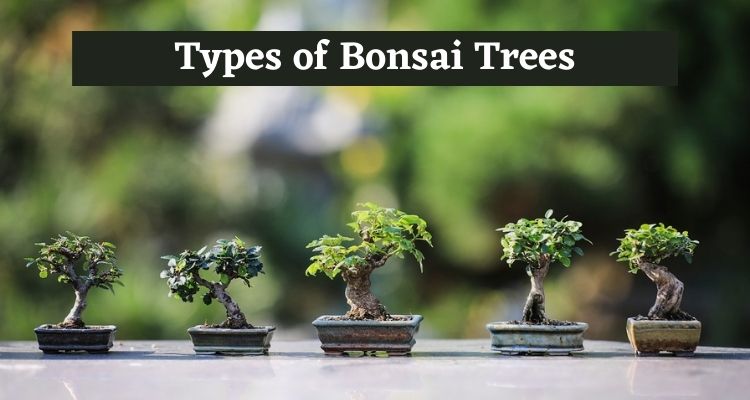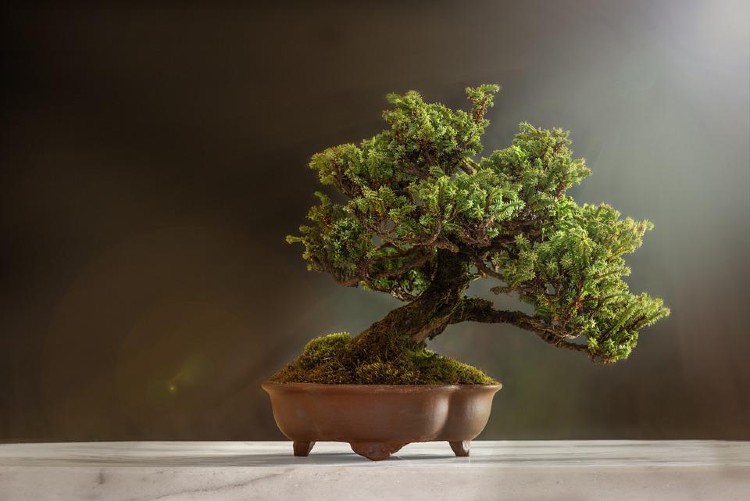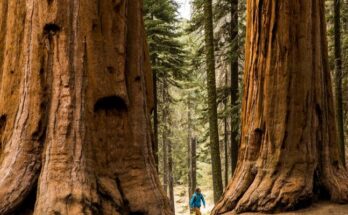|
Getting your Trinity Audio player ready...
|
About Bonsai Tree
The term “bonsai” actually means “planted in a container” in Japanese. Bonsai refers to growing these small trees and is an essential part of Japanese culture in the early 14th century. A bonsai is now an art form loved by people around the world. However, caring for a bonsai tree can seem intimidating at first. Now let us understand the types of Bonsai trees
Here are 3 Types of Bonsai Trees

There are many types of bonsai tree, some of which are mentioned below: –
1. Outdoor Bonsai
Apple bonsai, apricot bonsai, azalea bonsai, firethorn bonsai, Japanese maple bonsai, juniper bonsai, larch bonsai, olive bonsai, redwood bonsai, trident maple bonsai, white pine bonsai.
2. Bonsai Conifer
Juniperus bonsai, larch bonsai, pine fern bonsai, redwood bonsai, and white pine bonsai.
3. Bonsai Tree Types with Flowers.
Apricot bonsai, brush cherry bonsai, Appletree bonsai, firethorn bonsai, azalea bonsai, and serissa bonsai. Now let us understand in detail indoor bonsai tree types.
4. Indoor Bonsai Tree Types
4.1. Ficus Bonsai

It is one of the popular types of bonsai. With a wide variety of over 800 species of Ficus, they add a beautiful charm to any indoor environment. This species of bonsai has lush, fast-growing green foliage that sheds its pointed leaves seasonally. Some types of Ficus Bonsai are known for their milky sap, while others can even produce small flowers.
4.2. Bonsai Dwarf Umbrella

The dwarf umbrella tree is also known as the Schefflera arboricola or octopus tree. The name is derived from its crown-shaped foliage growth. It is a widely used type of bonsai that can be customized in various styles, such as exposed roots on rocks and weeping banyan style. This species has a vigorous foliage growth and produces leaves in batches of 8-10. However, they tend to have weaker roots. As a result, umbrella bonsai can cause skin irritation in some people.
4.3. Chinese ELM Bonsai

It is another most popular type of bonsai tree. Not only are they great indoor dwarf trees, but they’re also the easiest to care for. They grow quickly and tolerate overhydration, which most species don’t. It produces small leaves in a pair of 5-8 leaves. If you want to learn how to care for a bonsai tree, transplanting is a must. These bonsai trees need to be transplanted every two years in early spring.
4.4. Dwarf Pomegranate Bonsai

Dwarf pomegranate bonsai are scientifically known as Punica Granatum Nana and are extraordinary indoor dwarf trees. Small, touching flowers in bright colors grow on the tree, appealing to all the senses. Dwarf pomegranate bonsai has a thick trunk and grows delicious pomegranate fruits that are very small but edible. However, these species need some maintenance. To thrive nicely, they need the right amount of sun and just the right amount of water.
4.5. Snow Pink Bonsai

Snow rose bonsai, also known as serissa japonica, are widely known for producing small, luscious, but profuse flowers that are pleasing to the eye. Usually, these species can bloom in all seasons, but their beauty peaks from early spring to late fall, when the flowers are white or slightly pink. The snow rose bonsai species is known as the “tree of a thousand stars.” They make beautiful mini trees for indoors and outdoors.
4.6. Fukien Tea Bonsai

Fukien Tea Bonsai, also known as Ehretia Microphylla or Carmona Retusa, are among the most popular mass-produced indoor species. These species produce red fruits and small flowers all year. Mini trees have a thick trunk that can be difficult to manage after a while. The foliage is deep green and waxy. Fukien trees need 5-6 hours of sunlight every day to grow at their best, and they only need it when the soil begins to dry out.
Information About Bonsai Tree Seeds
For getting the best results, it’s is important to purchase your bonsai tree seeds from the plant nursery. There are many types of beautiful bonsai. Fir, pine, cedar, maple, and birch are the most common trees used for bonsai. Most of these species of trees belonging to these genera are easy to grow.
The easiest tree species to grow from tree seeds are Scots pine, black pine, and beech, which are great tree species for beginners. However, if this is your first time gardening, avoid tree species like juniper, white pine as they are more difficult to germinate.
Once you have selected the best type of tree for your bonsai, you can start looking around and find suitable suppliers. The ideal option is to work with an arborist with a physical store with friendly and knowledgeable staff. While you shop, the experts can easily answer your questions.
Here are Some General Bonsai Positioning Tips That Generally Apply to all Types of Bonsai:
Placement: Your bonsai should be protected from direct heat or drafts.
Lighting: Keep your bonsai in a very sunny spot.
Moisture: Bonsai trees need moisture to keep the soil moist.
Conclusion
As you can see, the bonsai tree is unique and interesting. They are suitable for any home and are also great for someone who is not used to maintaining trees. Get one for yourself today. They are great gifts for anyone who brings many moments of calm when you decide to use your bonsai and express your art.
Also Read: About Olive Tree Like Their Height, Care, Leaves, and Growing Process



